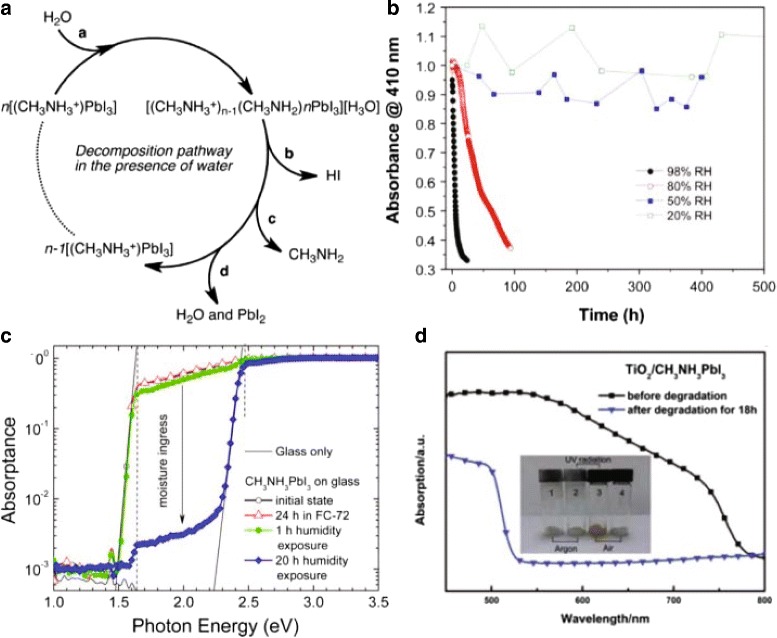Fig. 6.

a Proposed decomposition pathway of CH3NH3PbI3 in the presence of a water molecule. The main product of this pathway is PbI2 [48]. b Normalized absorbance measurements (taken at 410 nm) for CH3NH3PbI3 films exposed to different relative humidity [49]. c PDS spectra for CH3NH3PbI3 films before (initial state) and after exposure to a relative humidity in the range of 30–40% for different times. This clearly indicates a significant reduction in absorption in the range of 1.5–2.5 eV after exposure to humidity [1]. d Degradation of CH3NH3PbI3 in moisture and air atmosphere. UV-vis absorption spectra of TiO2/CH3NH3PbI3 film before and after degradation. The inset is a photograph of CH3NH3I exposed to different conditions: (1) CH3NH3I exposed to argon and without UV radiation; (2) CH3NH3I exposed to argon and with UV radiation; (3) CH3NH3I exposed to air and with UV radiation; and (4) CH3NH3I exposed to air and without UV radiation [32]
